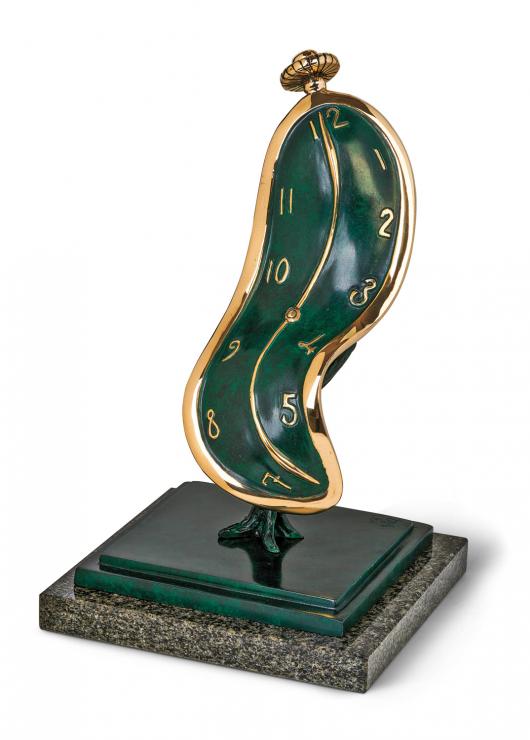DETAILS
Year :conceived in 1979, first cast in 1984
Height: 38.5 cm
Material: bronze
Technique: lost-wax
Edition Size: 350+35 EA
Patina: green
Maquette: original gouache “Dance of Time” 1980
References Descharnes: Dalí: The Hard and the Soft, Sculptures & Objects. Eccart, 2004. pg. 248 ref. 639
DESCRIPTION
The melting clock is the most recognizable Dalinian image and the artist chose to portray it consistently throughout his lifetime. Dalí became obsessed with the concept of time and used the melted watch image in many of his works. Dalí brings to this sculpture a dynamism, where the clock appears to be literally “dancing”. Unrestrained by the rigid laws of a watch, time, for Dalí, moves to the rhythm of a perpetual dance, speeding up, slowly down, stretching out, liquefying. Some say that Dalí represents in his watches Albert Einstein’s theory of relativity of space and time; the dancing watch illustrating the concept of movement through time. The Dance of Time I is presented alongside Dance of Time II and Dance of Time III.



